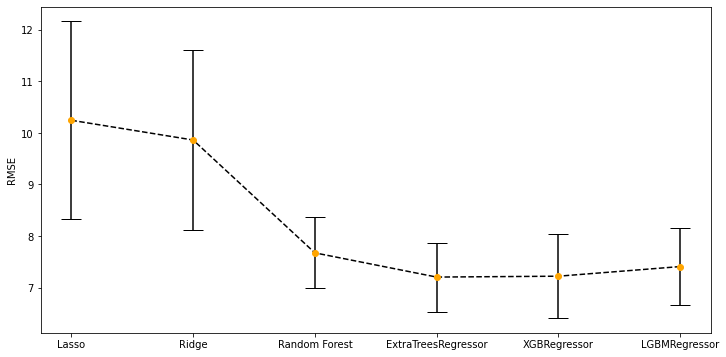Prediction of concrete strength by machine learning (link)
The repository is the final project in course MSDS 699.
Figure 1. Web app screenshot.
Concrete is the single most widely used man-made material in the world. Construction workers rely on experiments to determine the strength of concrete. The app presents an attempt to predict the strength based on the information of raw materials by machine learning methods.
The data of this project was collected from academic research papers and re-arranged to tidy format.
Create features related to chemical composition and specific surface area. Impute the missing values with mean. Standardize the data for Lasso and Ridge regression.
The classical statistical methods like linear or non-linear regression prove to be unsuitable to cope with the complexity of modern higher performance concrete [1]. Therefore, several machine learning algorithms were used to predict the concrete strength.
By using randomized search cross-validation, extra tree regressor outperformed the other algorithms including linear (Lasso, Ridge), bagging (random forest, extra tree), boosting (xgboost, lightgbm) regressors in terms of the RMSE score.
Figure 2. Comparison between models.
Select features based on permutation importance. If two or more features are codependent, the permutation importance would give unexpected results. For example, permuting a duplicated column would still allow the prediction to be half supported by the other identical column. As shown in the heatmap of Spearman rank-order correlations (Fig 3. zoom-in may be needed to see details), some features are correlated and could be clustered as a group. Thus, we performed hierarchical clustering on the Spearman rank-order correlations and only kept a single feature from each cluster to solve collinearity.
Figure 3. Heatmap of Spearman rank-order correlations.
It is also useful to test the significance of the feature's importance. As shown below, the bar chart in blue shows a null hypothesis distribution for comparison with the permutation importance in red. It is likely that a significant feature would be different from the null hypothesis distribution, thus we will drop the non-significant features.
Figure 4. The empirical p-test on feature importance.
Furthermore, we also keep decreasing the number of features to 9 based on domain knowledge. The ranking of permutation importance of the selected features is shown below.
Figure 5. Feature importance.
After filtering out the correlated features, we apply the model to the hold-out test data to examine the performance. The model gives reasonable predictions ranging from 20-90 MPa. It gives RMSE of 7.81 MPa.
Figure 6. The strength prediction by extra tree regressor.
To improve the ease of use for the web app, we dramatically decreased the number of features from 153 to 9, which moderately sacrifice the accuracy of the model. The RMSE increased from 6.49 to 7.81 MPa.
The data used in this project is from academic publications, which could be quite possible that the research work cannot represent the construction work in reality. We cannot ignore the risk of violating the fundamental assumption in a standard supervised learning setting which assumes both the training data and the test data are drawn independently from identical distribution. Collecting larger data, especially the data from site construction, to mitigate this concern would be my future work.
[1] Henri Van Damme, Concrete material science: Past, present, and future innovations, Cement and Concrete Research, Volume 112, 2018, Pages 5-24, ISSN 0008-8846
[2] Tianyu Xie, M.S. Mohamad Ali, Mohamed Elchalakani, Phillip Visintin, Modelling fresh and hardened properties of self-compacting concrete containing supplementary cementitious materials using reactive moduli, Construction and Building Materials, Volume 272, 2021, 121954, ISSN 0950-0618





